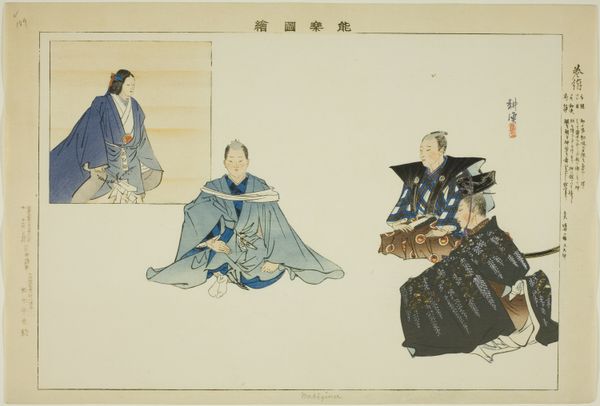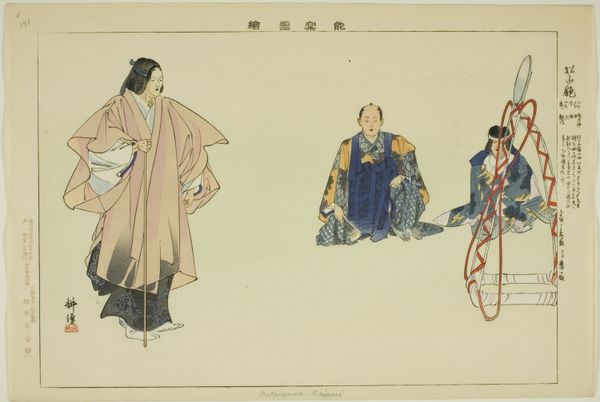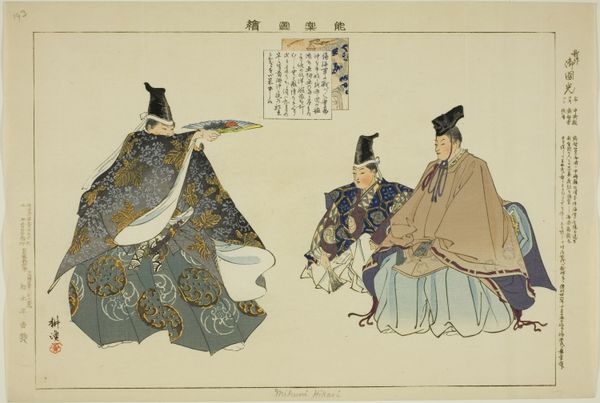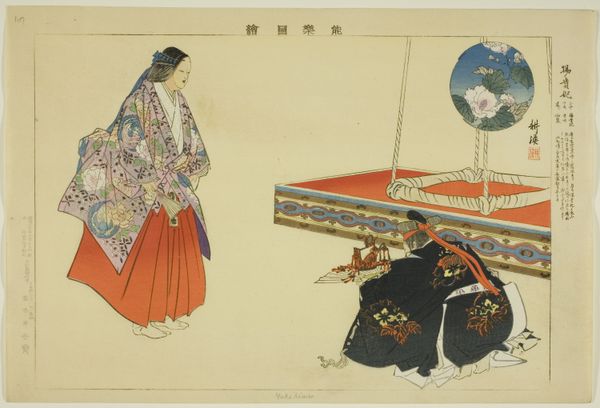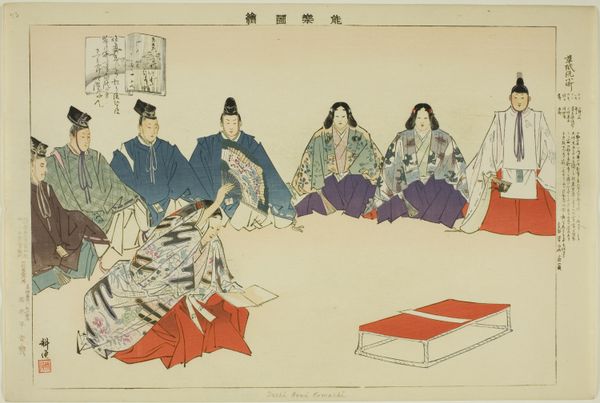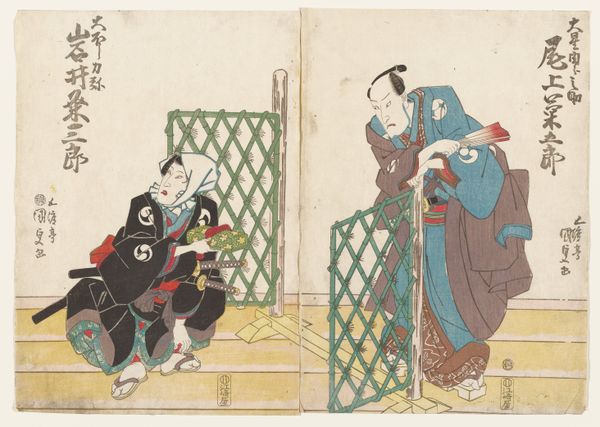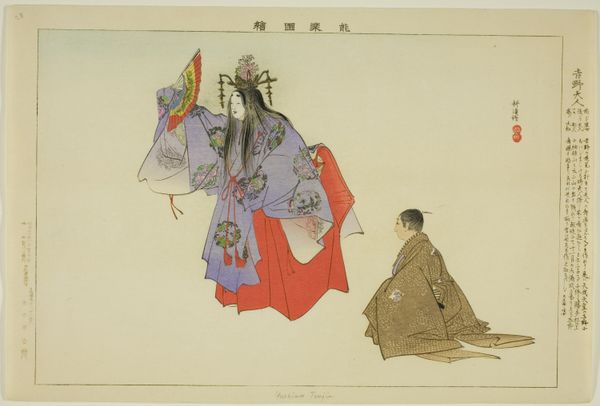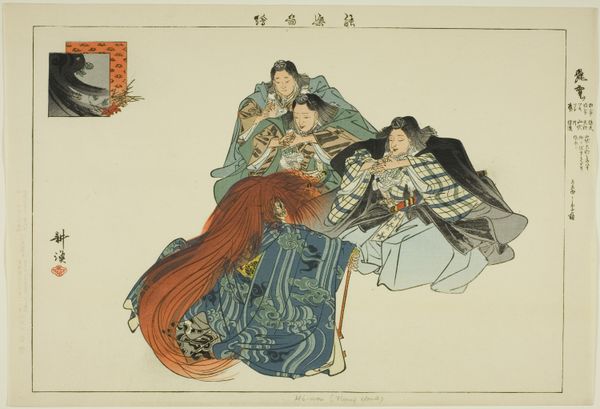
Cho (Ryo?), from the series "Pictures of No Performances (Nogaku Zue)" 1898
0:00
0:00
Dimensions: Approx. 25.2 × 37.4 cm (10 × 14 4/3 in.)
Copyright: Public Domain
Curator: This fascinating woodblock print, created around 1898 by Tsukioka Kōgyo, is entitled "Cho (Ryo?), from the series Pictures of No Performances." It's currently held at The Art Institute of Chicago. What strikes you most when you first look at it? Editor: The stark whiteness of the background immediately gives the print an almost theatrical quality. It accentuates the figures; their isolation somehow emphasizes the ritual and artifice inherent in performance, doesn't it? Curator: Indeed. Kōgyo was known for his detailed depictions of Noh theatre, and this work reflects his dedication to accurately capturing the nuances of the costumes and the poses characteristic of Noh drama. Notice the principal actor's commanding stance, his hand raised in a typical gesture. How might that figure’s visual weight play into gendered norms within traditional arts? Editor: The dominant figure absolutely projects power. And the contrast between the richly decorated robe of that lead actor and the relatively subdued garments of the seated figures does highlight the hierarchical aspects not just of Noh, but potentially of the society at large. Noh's heavily codified structure echoes other societal structures. Curator: Kōgyo lived through a period of immense social change in Japan, the Meiji Restoration, a moment of rapid modernization and westernization. Yet, his art stubbornly looked back to preserve these older, classical forms. Does this perhaps reveal a nostalgia? An anxious response to a society transforming too rapidly? Editor: Certainly a preservation effort, perhaps resisting a total embrace of western aesthetics by reaffirming a cultural identity. However, we shouldn’t overlook that representing No theater itself could also carry a political weight, signaling an embrace or endorsement of established hierarchies in Japan. Who are these images for, and who is included or excluded from appreciating them? Curator: Those are key questions. We should acknowledge that while he documented traditions, his work was part of a modernizing art market that catered to evolving tastes, so there's always a complex negotiation with his audience. Editor: Absolutely, and considering whose stories are told and how art like this contributes to the broader narratives of power and identity, that context shapes our perception and reception now, even as we examine the artistry of the work itself. Curator: Thinking through the politics framing cultural productions like this helps contextualize traditional arts as part of evolving cultural dialogues even today. Editor: It brings home how cultural legacy itself, however beautiful, is always tied to a particular time, place, and power dynamic. And reminds us to never see art, history, or beauty as something neutral.
Comments
No comments
Be the first to comment and join the conversation on the ultimate creative platform.

